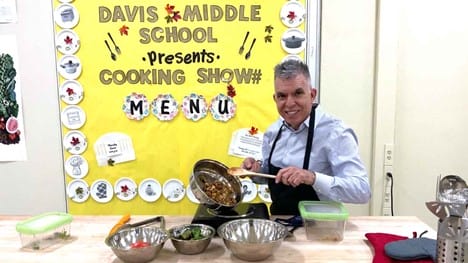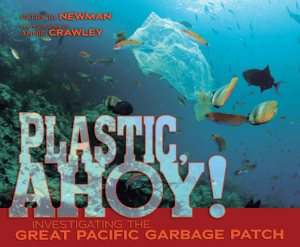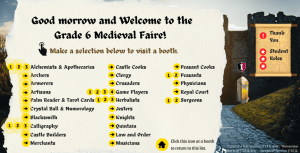It’s October.
The pace of funneling students into school rooms and Zoom rooms is running full speed, and the holidays are already peeking over the horizon.
And the teacher’s job of being always in two places at once requires another dose of inspiration.
As the school year marches forward, we know for certain that hybrid learning (remote and in-person) is now accepted as common practice—not just a temporary fix. But what strategies have we found to engage all students actively, without relying on a lecture?
Breathe.
Just… breathe.
Now, reach out.
What do you see?
(–Luke Skywalker, The Last Jedi 2017)
Don’t we all need a Jedi mentor at this moment? 😊
I like Luke’s final question because it reminds me that in many ways, the future is what I make it. What can learning look like? How do I want my students to experience a new concept? What will they remember personally? Let’s explore some ideas for making hybrid learning both personal and differentiated.
To provide a memorable learning experience to our students, teachers can make learning personal and real.
Telling a story makes a big difference. By adding the context of a plot with interesting characters, students can see the application of a concept in real life. For example, to learn about ocean plastic, students might see through the eyes of real scientists on a research ship spending weeks out on the ocean with no media but the wind and the sea and the stars in the sky. Author Patricia Newman and photographer Annie Crawley capture just such an experience in their book, Plastic Ahoy! (2014). The J. Orin Edson Entrepreneurship + Innovation Institute’s Youth Entrepreneurship team chose this source as the backdrop for our course on Artificial Intelligence and Robotics (AIR). The scientific method looms large as female scientists Miriam, Darcy, and Chelsea (all now decorated Ph.D. graduates!) formulate and test their hypotheses about how plastic affects marine life in the North Pacific Gyre. The story offers a rich and unusual environment where students can build their Design Thinking skills and apply Artificial Intelligence technologies to new challenges.
Caption: Plastic Ahoy! (2014) by Patricia Newman and Annie Crawley
Another way students can invest more personally in their learning is by choosing aspects of a lesson, like what specific example of a concept will they demonstrate and what makes this concept important to them (see Edutopia article). By the way, this goes for parents and families as well–check out Jose Gonzalez’s solution for reaching parents in Compton, CA.
Caption: Teacher Jose Gonzalez includes parents in his Davis Middle School Cooking Zoom activity.
Students also demonstrate buy-in when they get to personalize their online learning space. Create a space where students can learn about one another’s likes and dislikes, from dinner and ice cream to music and sports. This could be in a dedicated conversation thread or a Google slideshow or a Zoom background. When teachers include a student’s favorite things in an example, it builds connection. Check out this Gravit Designer video to see how students can customize memes, profiles, webpage backgrounds, hoodies & t-shirts, stationary and more!
Differentiation continues to connect students from their natural gifts and talents to their learning materials.
Including a variety of activities helps students appreciate one another’s strengths and talents, and it contributes to a safe learning environment according to Britt Andreatta’s LinkedIn Learning workshop, Workshop Facilitation.
One way students can gather and summarize information collaboratively is by using Zoom or Google Meet breakout rooms. Working with a partner or small group helps students feel included and engaged instead of lost and alone. Think Pair-Share or Jigsaw types of activities can work well in this mode.
Many get-to-know-you activities have been adapted using technology. This Edutopia article details how students can play Meme It, build a class Kahoot quiz, create a Guess Who game, or query the class in a Would You Rather game.
Using EdTech tools in alternative summative assessments allows students to show their knowledge in new ways and increases rigor and depth of knowledge. Could study groups create interactive media, like a Scavenger Hunt, to explore each of their research topics, from medieval Europe for example (see Example 2 in Thinglink Blog “Five exciting and engaging education strategies with interactive media,” August 24, 2021)? Could a student tell a real-life hero’s story using a Scratch Tutorial? Or could a young entrepreneur redesign the classroom furniture to accommodate new activities using TinkerCAD? Using these tools for assessment allows students to show different kinds of knowledge and make new connections with a concept.
Caption: Thinglink Scavenger Hunt of a school-made Medieval Faire.
Hybrid learning is here to stay, and our experiences in 2020 and 2021 show we can still improve student achievement in many cases. But we can at least know we are not alone. In our community, tools and best practices are surfacing that show us how hybrid learning could be. Even as the busy school year marches on, we teachers can take time to breathe, to let our minds wander, to collaborate with others, and to imagine what a learning experience can look like, not just what it used to look like.





